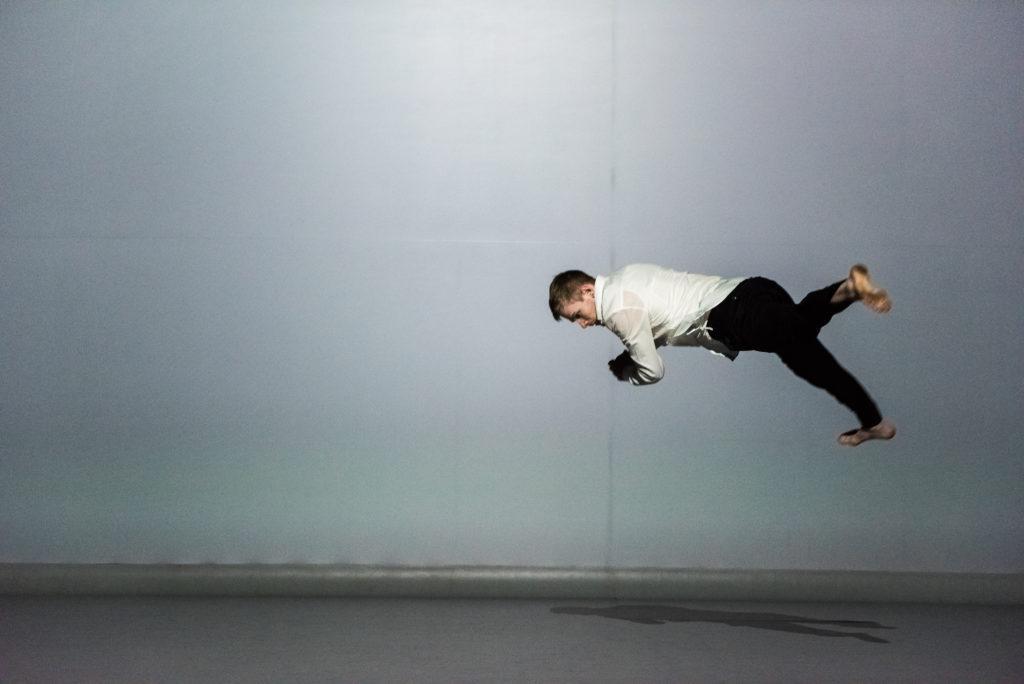
Alisdair Macindoe is an independent multidisciplinary choreographer living on Woi Wurrung country (Melbourne, Australia). He has been on the Ausdance VIC board since 2020.
Alisdair is curious about extending the boundaries of choreographic practice, and his work spans dance, sound, electronics, coding and text. In recent works Alisdair has begun an exploration of automated dance and Artificial Intelligence; new technology for music expression; trans-humanism; waste and climate change; and identity in the age of narcissism.
In this reflective essay for Speak Up for Dance, Alisdair looks back on his earliest childhood memories of dance, explains his continuing passion for expression, movement and exploration in contemporary dance, and confirms the importance of dance education.
The complexity of dance
While working on recent dance pieces, I have been thinking a lot about my own creative lineage, and the impact it has on what I make and do. The more I think about it, the more I realise that my artistic voice is shaped by those around me; choreographers making work and dance teachers sharing their methods and approaches. I love that dance appreciation, creation, and training requires direct interaction and physical presence, and the COVID-19 lockdowns have only made that clearer for me.
Through making work, I have begun to wonder whether understanding dance as an abstract series of historical events and figures is a fraught perspective. The same goes for understanding the dance landscape as an endless scroll of images and short videos of what dance makers are up to at the moment. I am interested in thinking of dance lineage as a complex, intertwined network of ideas and languages shared in physical spaces, and passed down through intimate experiences.
From an outsider’s perspective, dance can seem to employ regressive power structures, as it can require extreme levels of discipline for dancers to achieve excellence and depth in the form. It’s a form of creative expression that requires failing at what you are physically doing in front of at least one other person to make progress. I love that it is hard, frustrating, challenging and confronting.
In dance there is no hiding behind a good marketing campaign or a snazzy post with cool effects and photography. The very physicality and presence of the body in dance can be confronting for young dancers. There are inbuilt emotional and psychological barriers that must be worked through. I love this about dance, it is a complexity that I have grappled with since first dancing as a boy in Melbourne.
Playing with dance
Although I don’t remember it, my first experiences of dance and expressive movement in a structured setting were through a Carl Orff music for children course my mother (a classical harp player) took me to. I think I must attribute her to my inexplicable love for dance as I was building an understanding of dance and music at the same time as I was developing spoken language and general awareness. I’m grateful for having exposure to dance and music at such a young age. My first experience of a dance performance, which I also don’t remember, was when my mother took me to work with her; a rehearsal of a classical ballet/classical Indian dance work in development, again at a really young age. She recalls me getting up and imitating the professional dancers, and it was from there that she had a clue as to my natural abilities and interests. So begins a long relationship with dance, which for the first 15 years really centred around ballet.
Dance was a form of playful escape for me. As a young person I did not do well with words and the more conventional subjects offered at school, so dance was a place where I could go and feel accepted and included. By the age of 5 or 6, I had declared to my mother that I wanted to be a ballet dancer when I grew up. Perhaps uncharacteristically for a child of that age I was dead serious and wanted to have a career plan in place. To many of the people around me my confidence and clarity around my career seemed strange, but in the context of my family circle, who were all professional classical musicians, it felt more like I was adopting my place in the family linage of performing artists.
As a young dancer, I fell in love with the physical sensations that ballet for children offered. My teachers, Penelope Nunn at South Yarra ballet school, and Dianne Parrington at The Victorian Ballet school, had great imaginations and would find beautiful imagery to turn dance exercises into games and spaces of play and aspiration. The yearly shows we performed, and the trips to see a variety of dance performances, were the highlights of my childhood.
Moving on from ballet
One of the pitfalls of ballet, and particularly professional ballet when I was young, was that it came coupled with quite narrow ideals about bodies. Even though I was close to falling inside the lines, my entire experience of ballet training, through several schools and institutions, was peppered with teachers telling me and my mother that my bone structure, particularly my feet, ankles and hips were not suitable for professional ballet. I was also told that there was nothing I could do about it. Despite this negative advice, I persisted; blindly following a deeper knowledge that I was a dancer and that I could make it as a professional. To my teachers’ credit, they all supported me, and worked tirelessly to help me be as good as I could be. They were generous enough to provide scholarships and advice on how to plan my career moving forward. In 1997, for my 13th birthday, my grandmother took me to the first Chunky Move show presented in Melbourne; Bonehead. It was the most thrilling dance experience I had ever had, and on that evening, I realised that contemporary dance was where my future lay.
What I didn’t realise was that I was preparing to work in a dance scene that did not really exist in Melbourne, yet. Chunky Move, Lucy Guerin Inc and Balletlab—companies that really came to the fore in the late 90s and early 00s—were only beginning to establish themselves as central hubs for new ideas in dance at the time I was training at VCA secondary and tertiary schools.
When dance loves you back
Dance can be many things; to begin with for me it was about celebrating my body as an explorative space. As I matured, dance became a way for me to express my understanding of society and reflect on this through creating dance works and ideas that in some way mirror the human condition. This development really occurred over my time at the Victorian Collage of the Arts as a student in the secondary and tertiary streams. For the first time, I undertook full-time training and was offered the opportunity to study dance deeply and with the best dance teachers Melbourne had to offer.
Dance can be easily ignored or misunderstood in a state obsessed by football and sports; however, I was lucky enough to live in the inner city; part of a community that valued performing arts. As a young dancer I was exposed to several important male role models. They were established ballet dancers and choreographers including Steven Heathcote, David McAllister, Greg Horsman, Stephen Baynes and Ross Stretton, as well as contemporary dancers and choreographers like Brett Daffy, Trevor Patrick, David Tyndall, Shaun McLeod, Byron Perry, Luke Smiles, Antony Hamilton and Gideon Obarzanek.
My favourite dancer of all time is Byron Perry, he is retired now, but his performative sensibility was so open and personal. It felt like you were the only person in the auditorium when watching him dance. Over the years, Perry’s work with Lucy Guerin was mind-blowing. Lucy Guerin is my favourite choreographer, so when the two worked together it was sheer bliss to see.
In 2021, I created a work that I dedicated to Lucy, who has been mentoring me for about 15 years. Her support, and encouragement over that time has had a profound effect on my personal and professional growth. Her impact on the broader Melbourne dance community, since returning from New York 25 years ago, contributes so much to the mesh of knowledge that is Australian dance culture and, for many dancers, being a part of the community around her is so enriching.
Dance now and forever
Access to dance education at an early age is a huge reason why I was able to become a professional in the sector. There are many dancers who find their way to dance later in life, but for those like me it was a childhood safe haven that offered things that school, and home life, could not.
I have been performing less and less over recent years, but when I do have an opportunity to dance and perform, I love it. There is an infinite world of exploration in dance and dance making, and I don’t think I will ever feel like I have finished learning what dance can be as both a dancer and dance maker.
If you are a young dancer, and discovering your love of dance, share your love of it and be proud of your passions. It can be an extremely long road from training to professionalism, so indulge in enjoying the training and be patient with career progress. Sometimes being the best dancer will get you places, and sometimes success comes from being the dancer who kept dancing long after their classmates quit.
If you have an experience or topic that you would like to share with the dance industry, please get in touch with us

